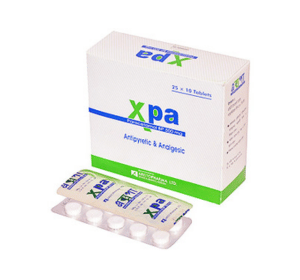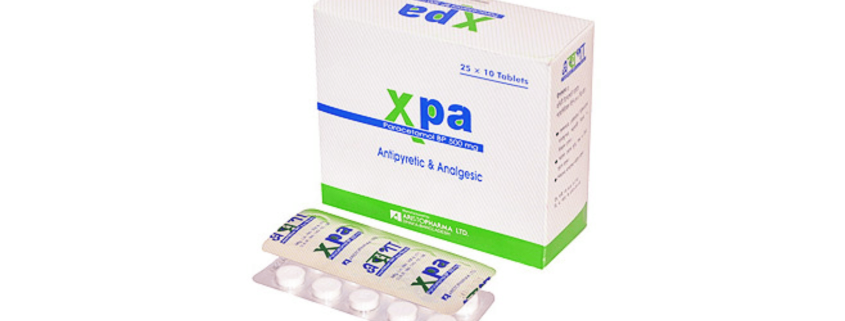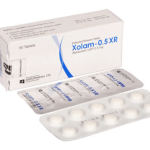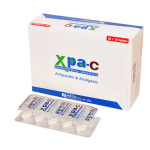Xpa (Paracetamol)

Therapeutic Group : Analgesic & Antipyretic
Indications:
All conditions requiring relief from pain & fever due to neuritis, neuralgia, headache, migraine, toothache, rheumatic disorder, cold, influenza, dysmenorrhoea, acute & chronic inflammatory disorders.
Extended Release Paracetamol: It is effective for the relief of persistent pain associated with osteoarthritis and muscle aches and pains such as backache. It also provides effective, temporary relief of pain and discomfort associated with headache, tension headache, period pain, toothache, pain after dental procedures and cold & flu.
Dosage & Administration:
For Tablet:
Adults: By mouth, 1-2 tablets every 4-6 hours to a maximum of 8 tablets daily.
For Extended Release Tablet: Adult and children over 12 years: 2 tablets, swallowed whole, every 6-8 hours (maximum 6 tablets per day).
For Suspension:
Children: Up to 1 year: 1/2 -1 teaspoonful
1-5 years: 1-2 teaspoonfuls
6-12 years: 2-4 teaspoonfuls
These doses may be repeated every 4-6 hours when necessary (maximum of 4 doses in 24 hours).
For Paediatric Drops:
Neonates & Children:
0-3 Months: 0.5 ml
4-11 Months: 1 ml
12-23 Months: 1.5 ml
2-3 years: 2 ml
4-5 years: 3 ml
The above doses 4 times daily or directed by the physician.
For Suppository: Suppository should be administered rectally.
Children: 3 months-1 year: 60-125 mg
1-5 years: 125-250 mg
5-12 years: 250-500 mg
These doses may be repeated every 4-6 hours as necessary (maximum 4 doses in 24 hours).
Adults & children over 12 years: 500 mg-1 g every 4-6 hours to a maximum of 4 g daily.
Contrainidications:
Paracetamol is contraindicated in patients with a known hypersensitivity to its components.
Warning & Precautions:
Paracetamol should be given with care to patients with impaired kidney and liver function. It should be given with care to patients taking other drugs that affect the liver.
Side effects:
Side effects are usually mild, though haematological reactions have been reported. Skin eruptions have also occurred. Symptoms of overdose include vomiting, gastrointestinal haemorrhage, liver damage, cerebral edema and renal tubular necrosis. Hypoglycemia has been reported after overdoses of Paracetamol.
Drug interaction:
Domperidone & Metoclopramide accelerate the absorption of Paracetamol. Colestyramine reduces the absorption of Paracetamol. Prolonged regular use of Paracetamol possibly enhances anticoagulant effect of coumarins.
Use in special groups:
Use in pregnancy & lactation: Though Paracetamol appears in breast milk & crosses the placenta it causes no harmful effect to breast-fed infants or foetus.
Packing:
Xpa Tablet: Box containing 250 tablets in blister pack.
Xpa XR Tablet: Box containing 100 tablets in blister pack
Xpa Suspension: Bottle containing 60 ml/100 ml suspension.
Xpa Paediatric Drops: Bottle containing 15 ml paediatric drops.
Xpa-125 Suppository: Box containing 10 suppositories in PVC / PE strip pack.
Xpa-250 Suppository: Box containing 20 suppositories in PVC / PE strip pack.
Xpa-500 Suppository: Box containing 20 suppositories in PVC / PE strip pack.



